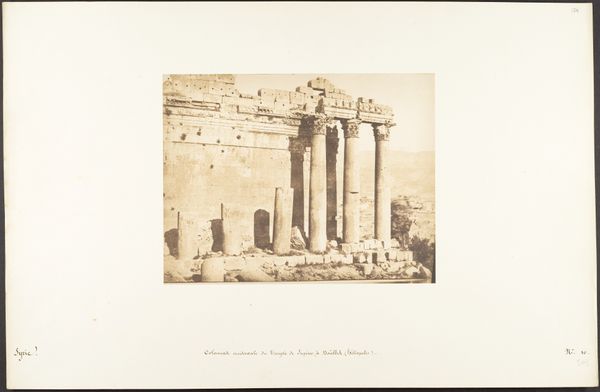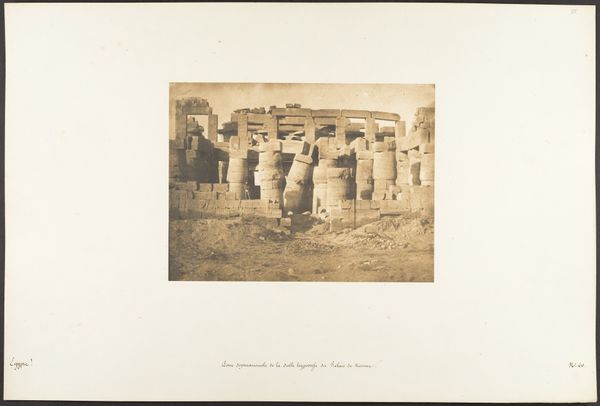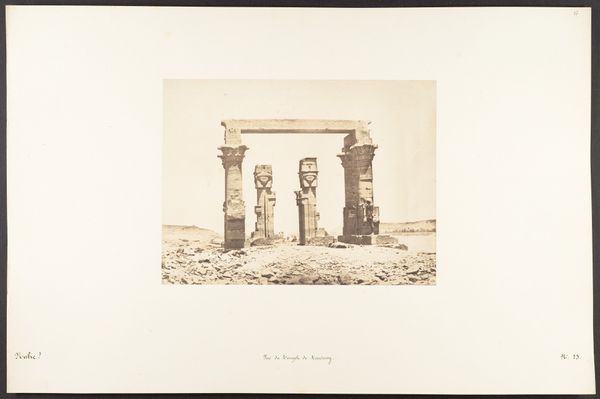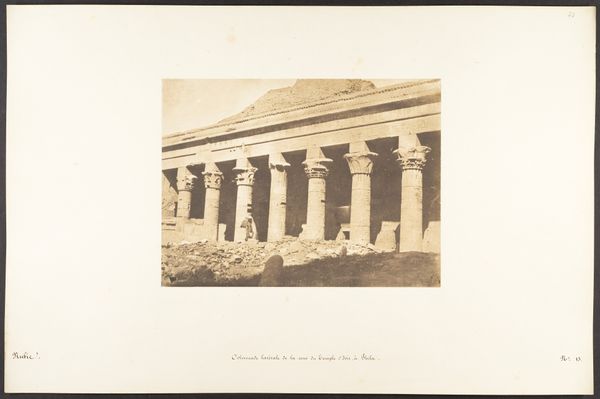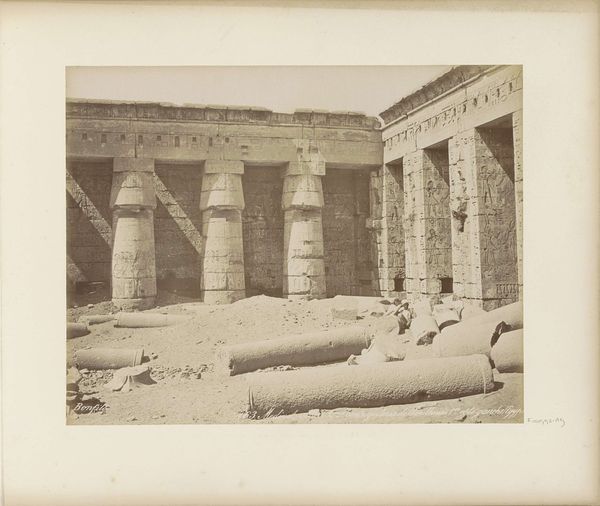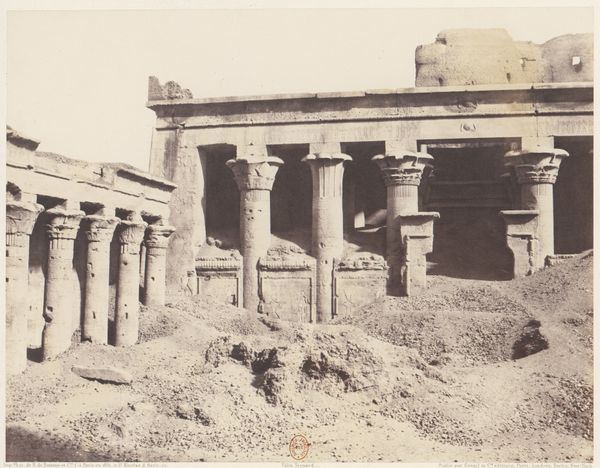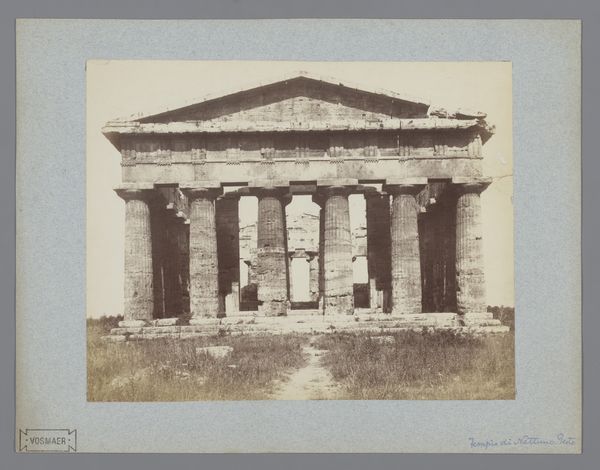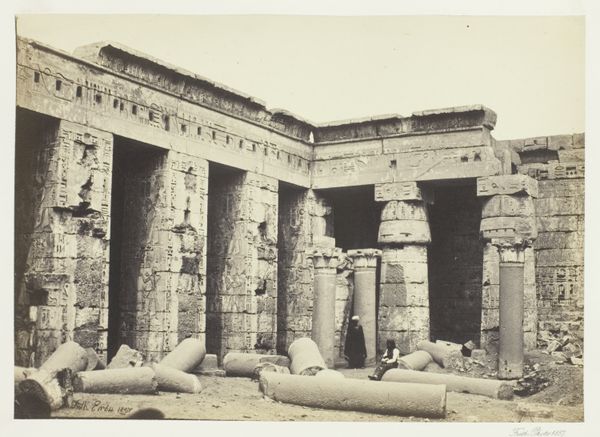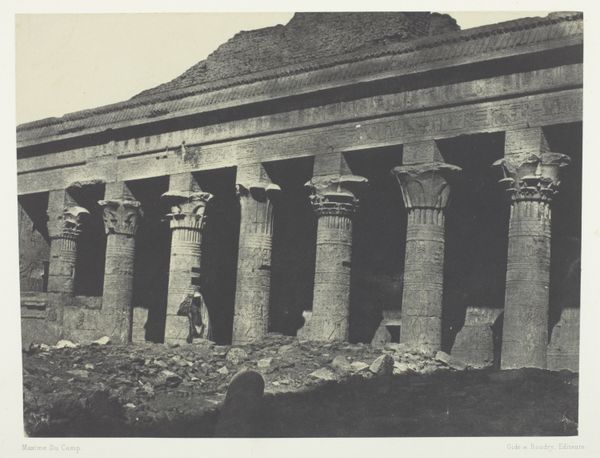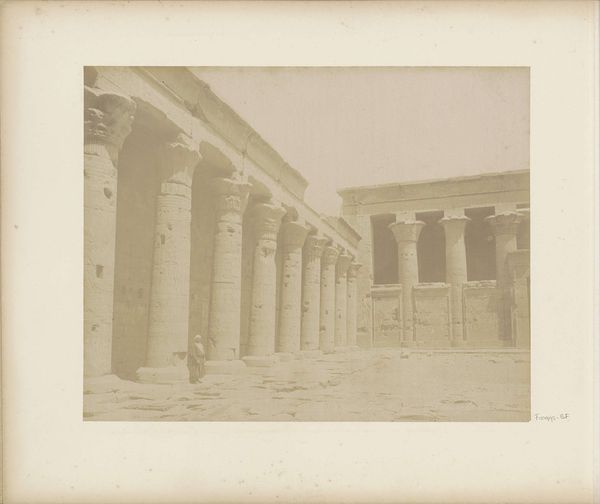
Vue de la façade du pronaos du Temple de Dakkeh (Pselcis) 1850
0:00
0:00
daguerreotype, photography, architecture
#
landscape
#
daguerreotype
#
ancient-egyptian-art
#
photography
#
ancient-mediterranean
#
arch
#
architecture
Dimensions: Image: 6 3/4 × 8 3/4 in. (17.1 × 22.3 cm) Image: 8 7/8 × 6 9/16 in. (22.5 × 16.7 cm) Mount: 18 11/16 × 12 5/16 in. (47.5 × 31.2 cm)
Copyright: Public Domain
This photograph of the Temple of Dakkeh, taken by Maxime Du Camp, presents a study in contrasts through its play of light and shadow. The monochromatic tones create a sense of timelessness, emphasizing the temple's architectural form. The composition is structured around the temple's facade, where the geometric solidity of the building contrasts with the intricate details of the columns. Light rakes across the structure, accentuating the texture of the stone and revealing the depth of the carvings. This interplay highlights the temple's materiality. The photograph functions as a record of the temple's physical presence and engages with broader themes of preservation, memory, and representation. The way Du Camp captures the temple implicates a semiotic system in which the temple is more than a building. Instead, it acts as a signifier of ancient knowledge, power and cultural continuity. Note the textured surface which evokes a sense of history. This tactile quality is essential to how the photograph operates aesthetically and conceptually. It invites viewers to contemplate the layers of time and meaning embedded within this ancient structure.
Comments
No comments
Be the first to comment and join the conversation on the ultimate creative platform.

